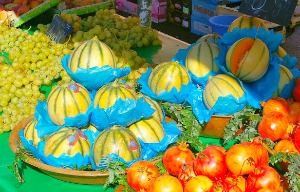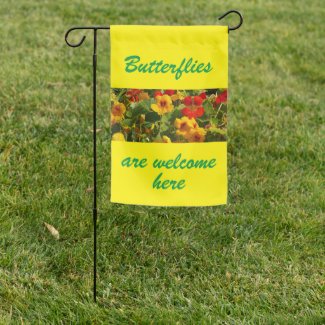Growing Heirloom Melons for Fun or Profit
A version of this article first appeared in Hobby Farm Magazine.
© National Lilac Publishing, LLC by Barbara Berst Adams
“Heirloom melons look different, that is for sure,” said Brad Stufflebeam, owner with his wife Jenny, of Home Sweet Farm in Texas. Brad and Jenny grow heirloom and open-pollinated melons along with other fruits and vegetables on their sustainable small farm. “The aromas and flavor cannot be matched with conventional commodity produce,” he said. “Many melons could be a dessert.”
Indeed, melons are the candy of garden fruits and vegetables. A vintage melon patch for unique family enjoyment or sought-after specialty market crops can be a small farm’s candy land. There are melons with flavor hints of mango, pineapple or peach. There are favorites grown by Thomas Jefferson and French melons with ambrosia-like scents. The Kiwano melon has flesh that resembles lime green Jell-O; and then there’s Tigger, a taste-test winner first discovered in Armenia with lemon yellow rinds splashed with red zigzag stripes. Its flesh is so aromatic, that cutting open one Tigger perfumes an entire room.
Where heirloom melons came from and how they almost disappeared
Thousands of years ago, African Bushmen relied on wild watermelons to provide living canteens of uncontaminated water. Wild relatives of our current watermelons and other familiar melons still grow in Africa. But the flavor and geographical range of melons have certainly come a long way. It is believed the seeds of the sweetest were saved over time until they appear to have been cultivated in Egypt at least 4000 years ago.
Around 3000 years ago, they reached beyond Egypt via trade routes, and most likely arrived in Europe during the Greek and Roman times when North African Moors brought melons to Spain during their occupation from 711 to 1492. Melons and cucumbers were planted in Haiti when Columbus landed, and early European colonists and African slaves brought more melons, including watermelons, to North America. Native Americans took them eagerly into their gardens. And it was not just the flesh that was valued. Watermelon seeds also gave nourishment, especially to Africans and Chinese, over many hundreds of years.
Even today, Chinese medicine and recommendations from Edgar Cayce, who widely promoted holistic healing, recommend white watermelon seeds and a tea made from them as a remedy for mild ailments. Even the rind is sometimes used as a healing food.
By the 1800s, a rainbow of melon varieties graced gardens and filled farmers’ patches. But like many food crops, melons would eventually undergo hybridization and commercialization in the 20th century. They were bred for centralized agribusiness, long distance shipability and for growing and harvesting conditions that suited larger commercial operations.
When this happened, many of the vintage melons of yesteryear went by the wayside. Conventional hybrid watermelons as well as the netted melon Americans have come to call cantaloupe and the honeydew became the norm in supermarkets, with a few novelties showing up here and there. But there are hundreds of worthy melon varieties available, and more being rediscovered or rebred.
The welcome return of heirloom melons
Locally grown heirloom melons make an especially inviting gourmet market crop, as they are often still rare in supermarkets. They need to be vine-ripened for maximum sugar content, which often takes careful hand harvesting at various spells over the growing season. They do not sweeten much, if at all, after being picked. However, some can be stored for weeks or even months, and during this time, juiciness, texture and aroma may continue to improve.
Heirloom melons have also impressed Josh Kirschenbaum of Eugene, Oregon, who is the product developer of seeds and green goods for seed companies, including Abundant Life Seeds, which tests and distributes heirloom varieties. “This past summer, we trialed over 75 different melons and over 80% of them were open-pollinated,” he said. “There were quite a few impressive varieties with probably just as many reasons why they were impressive. One thing that stood out was that the varieties touted as being early maturing varieties did indeed ripen at the same time as their hybrid counterparts.”
Those who trial seeds for specialty markets know that the varieties must be top quality to retain loyal customers. Vintage melons, with their great variety, are attracting customers quite well. “Another trait I found impressive about several of the older, open-pollinated melons,” Josh continued, “was the unique shapes, sizes, and colors. I think that for some folks, all they see are the standard melons found at the grocery store. For those who are looking for something unique, there really are great choices out there.”
But
what about practicality? Are they as “tough” as hybrids? Apparently
many of them are. “Something else that I found impressive,” Josh said,
“was that several of the older, heirloom types were quite disease
resistant.”
An all-time favorite summer treat, certain melons can also be pickled and preserved. Usually we think of melons as fresh-eating only fruit, but they lend themselves to preserved foods for sale as well. At Cedar Hill Farm in Rice, Minnesota, fresh honeydew slices are simmered in vinegar, allspice, orange peel, nutmeg, cinnamon, cloves, sugar, and pectin to make a pickled melon, which they sell over the internet. And the varieties that store naturally well into the winter extend the delights of these fruits.
Marketing your heirloom melons
Want to sell your heirloom melon crops? When I grew my first specialty melon more than 25 years ago on my Island Meadow Farm market garden in the Pacific Northwest (where local vine-ripened watermelons are rare because of low heat), I sliced it in half, and tested one of the halves on a traditionalist friend who knew watermelons only as red and pink fleshed. But this one was a small yellow-fleshed watermelon. “I kept it in the refrigerator for a week before I could touch it,” she said. “It seemed so strange to see watermelon be yellow. Once I ate it, it was so delicious.”
Since
then, most folks aren't quite so tentative anymore with new varieties,
and have come to expect wonderful things from the world of heirloom
melons. “We have been growing melons now for only five seasons or so,”
Brad said. “We started, naturally, with an interest in old varieties;
our first was the now popular Moon and Stars watermelon.”
Moon and Stars is a large, deliciously flavored heirloom watermelon with dark green rind speckled with bright yellow dots that resemble stars in the night sky, and often at least one larger yellow spot (a moon). It has come to be better known by the public since it first reappeared in rare seed catalogs near the end of the 20th century. Since its rediscovery and introduction to the general public, citizens of our country seem to want even more melon surprises. “Most everything we grow is unusual, and educating the public is the center core to everything we do,” said Brad.
Jere Gettle travels the world seeking fine heirloom seeds and contacts many successful market growers. Jere is the discoverer of the Tigger melon and now sells many vintage melon seeds to growers across the globe. He said that the key to drawing customers to newer crops is variety. “Customers buy more and try more when they see the wide variety available,” he said. Jere also suggests offering recipes, serving ideas, and free samples if you can. “Once people try many rare varieties, they want more!”
Whether selling at a farmers market or roadside stand, through your CSA, or selling to local restaurants, another idea Jere suggests is informing others of the heritage of the fruits. “Give the history of your varieties and show the people that your varieties are part of our culture and not mass produced (solid-as-rock fruit that is picked so green they still taste of cucumbers).”
To go even further, he said that history can be made to come alive at a farmers market or roadside stand. “Make an historical looking display,” Jere said, “with baskets and wooden crates. And dress in historic or ethnic clothing. Think about the total picture; make your stand look like it fell out of the 1850s or 1950s. But whatever you do, be unique. The more the better, as long as you’re tasteful.”
(See our agritourism insurance article for protecting your property when inviting customers to the farm.)
Choosing melons for your patch
When selling to customers, market farmers often find that a combination of supplying familiar favorites from seasons past, along with new surprises each year can help bring customers back again and again, while doubling as testing ground for new varieties that may become future crop staples. The initial choice of possible melons for your summer patch is huge and continually changing. Books and open-pollinated seed catalogues can give you a good start. Here, other growers are happy to share their favorites to help you get started on making your decision. Brad and Jenny, in fact, use the services of an expert -- their own daughter -- to help make their choices. “We try new melon varieties every year,” Brad said. “This year’s additions include Golden Beauty, Charentais, Banana, Kansas, Orangeglo, Tigger (how can you pass that one up), Ogen, Golden Midget, Boule D’Or, and Black Diamond Yellow Flesh (we expect this to be a hit… Black Diamond Red is famous around here).”
The Charentais that Brad mentioned above is also a favorite of Jere’s and many others. It is considered by Amy Goldman, author of Melons for the Passionate Grower, to be the melon favored above all others by the French, which she describes as having a “divine scent and ambrosial flavor.” The Charentais originated in western France’s Poitou-Charentes region around the early 1900s. Gourmet and heritage seed collectors have found it grows well anywhere in the United States that other melons grow. Jere describes it as “top of the line when it comes to marketing.”
Jere is also very impressed with Boule d'Or (Golden Perfection). “This is my favorite honeydew type melon that was once a market melon in France and now is a winner for classy markets. The flavor will win you over to heirloom varieties with the first bite!”
Piel de Sapo (Toad Skin) is a very rare white-fleshed melon Jere likes from Spain with exceptional keeping quality. About eight inches long and oval, it is a late season variety. “This variety can be sold over a long period,” said Jere, “and is good for autumn sales. With its fragrant, mellow flavor that is richly sweet, it can keep until Christmas.”
Growing Tips
“Duplicate Africa,” say many successful melon growers. This means long hot dry summers with days in the 80s F and nights in the 60s F, and a very well drained fertile, sweet and light soil.
Josh Kirschenbaum, who also has a degree in botany from Ohio University, gives further growing tips on how to accomplish this in North America: “Melons prefer a rich, well-drained soil. Planting in a raised bed is ideal. They also like to be fed. Putting a granular, organic fertilizer an inch or two below the seed/plant is usually adequate. Applying a liquid fertilizer that is higher in nitrogen, such as Earth Juice Grow Formula 2-1-1, can get the young plants off to a good start. You might also want to side dress with fertilizer when the plants are starting to fruit. And, of course, compost is a great way to amend the soil to add nutrients.”
Though it’s possible to start seeds in pots, there are reasons why they may succeed better if direct seeded, even if it means waiting for warmer soils, or warming soils first by laying black or clear plastic over the soil to intensify heat into the soil from the sun.
“Some folks start the seeds indoors to get a jump-start on the season,” Josh said. “To be honest, though, I have found that direct seeding when the soil temperatures have reached 60--75 degrees F to work better for me. Melons have a taproot that does not like to be disturbed and if they are started indoors and kept in a pot too long, it can stunt growth. Furthermore, the time that it takes for the plant to get adjusted once transplanted takes time, too.”
According to Josh, the pest to watch out for is the cucumber beetle. These spotted or striped insects chew on a variety of garden plants, including melons. “For the cucumber beetles,” Josh said, “you can physically remove them from the plant and destroy them. For small problems, an insecticidal soap will work and for large outbreaks, rotenone, pyrethrin or neem oil works well.”
And about all that “African” heat that melons need? “Melons should need no extra heat in zone 5b and warmer (the coast climates not included),” Jere said.
But do not despair if you are in one of those coast climates, or otherwise have wetter, cooler or shorter summers. On my Island Meadow Farm, I’ve grown shorter season varieties in the cool, wet Pacific Northwest by building a horse manure hotbed below the melons which generated heat up into the soil. Heat absorbing and releasing stones were placed around the melon plants, and I further warmed the growing area’s soil with black plastic before planting, then placed each melon up higher on the stones closer to the sun than the surrounding ground. A slight southern slope in the raised beds further warmed the area, and I used lots of fluffy well-drained compost amended with dolomite to sweeten our native heavy clay soil.
Josh agrees that even those in cooler climates can grow melons and that plastic as well as cloches can have multiple benefits for growing melons. “There are several methods to successfully growing melons in (cooler and/or wetter climates),” he said.
“For starters, to warm the soil up faster in the spring, cover the beds/rows with plastic previous to planting. This will also help in drying the soil from all of the winter precipitation. Melons should not be planted out before the danger of frost has passed without protection, but warming the soil can still potentially add two to four weeks onto the growing season. To combat diseases that are common in the fall and to extend the growing season, consider putting a cloche or hoop house over the plants. This will prevent rainwater from touching the leaves and it will also protect the plants from cold weather.
When considering cloches, remember that melons do need to be allowed to get insect pollination when considering when to apply the cloches. If the melon patch is large enough, and has enough varieties in blossom for a long enough period, it may warrant a beehive, even a smaller garden variety honeybee hive which could produce organic melon-blossom honey -- another specialty crop.
Harvesting
Different varieties of melons need different tests for ripeness. Many people have perfected, over time, their favorite method of knowing when specific melons are ripe. “I have found,” Josh said, “that melons (except for watermelons) are ripe when they fall off the vine with little effort. In other words, a very slight tug of the fruit should be enough for the fruit to come off the vine. Watermelons, however, are typically ready to harvest when the two tendrils that are nearest to the fruit turn brown.” On rare occasion, some varieties appear to not fall easily off the vine until overripe, and experience teaches harvesters when to cut the fruit off sooner. Some harvesters also watch for a color change, such as an overall brown turning yellow, or the white patch of the melon that touched the soil turning to yellow.
Perhaps the Bushmen learned to check the tendrils or colors to know when their wild melons were ripe. Since those original wilds of Africa, melons have never seemed to lose their appeal across the globe and throughout history. In ancient Egypt, Napoleon’s soldiers strengthened themselves with melons. From there, as melons pushed on to the green gourmet gardens of France and then to America, young lads risked punishment for stealing from melon patches at night.
It’s no wonder locally grown vintage melons are becoming popular again after a few decades of commercial hybrids. They are certainly a customer draw on Brad and Jenny’s Home Sweet Farm. “We want to make food exciting, and that helps to get kids and families to eat real food, getting back in touch with agriculture.” Brad said. “They begin to realize what they have been missing. It’s not just organic; it’s local, it’s beyond organic. Providing old-fashioned nutrient dense food is exciting. We want everyone to taste and see the difference.” And what better way than with a candy land of sweet, aromatic melons!
Protect your farm: Insurance ideas for farmers who invite customers onto their farm














